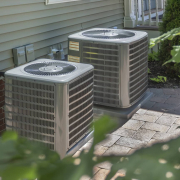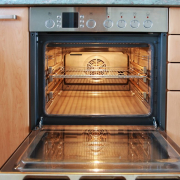Electrical Safety Tips for Installing Christmas Lighting Outside
It’s that time of year again. The turkey has been stuffed, cooked, and digested and everyone’s belly is asking them why did they go for that 2ndhelping of pumpkin pie. You turn on the classic “Christmas Vacation” and watch Clarke Griswold hilariously hang enough Christmas lights to use up a whole blocks electrical supply. While I too find this sequence during the movie to be hilarious, electrical safety is no laughing matter, especially when it comes to decorating your house for the holidays. So, when you are out putting those 1000s of light bulbs to make your house glow brighter than the sun, here are some safety tips to ensure you make it to Christmas Day in one piece.
1) Always use a GFCI protected outlet or devices– Whenever you are plugging anything electrical outside, it should have ground fault protection via a GFCI device (To learn more about GFCI’s visit our blog post on them here[TW1] ). Since it is highly likely the cables you use outside will see rain or snow over the weeks they are installed, using a GFCI protected outlet or device will prevent possible electrocution from stray current but tripping the power if a ground fault is detected. If you don’t have GFCI protected outlets outside, you can also buy cords that have GFCI protection embedded in them to keep you and your family safe.
2) Make sure the cables and equipment you use are exterior rated – Any extension cords or other electrical décor you buy, should tell you whether it is rated for indoor or outdoor use. Outdoor cables are sealed more tightly and are more weather-resistant than their indoor counterpart. To prevent your cables from easily fraying and to prevent water from penetrating any wiring, make sure you are using exterior grade equipment.
3) Check your cables for frayed sheathing – Your extension cords and other cables you use for your outside décor should be checked for fraying prior to installing them. Frayed cables can let water penetrate the wiring and cause a shock hazard. If you find a frayed cable, you should either replace it or repair it if you can do so safely.
4) Know the power you are using – Unlike Clark Griswold, it is important to have a rough idea of the power you are consuming. Thanks to technological advances, LED lights take very little current to operate, but some people still use incandescent lights to save a buck or two at the store. When looking at two package boxes one for incandescent and the other for LED outdoor lights, I note that the incandescent lights have a 0.34 amp draw versus a 0.06 draw for LEDs (Please note this may change based off the brand of lights you buy). That means if you use 1500 incandescent lights you will be drawing around 5 amps of current, were with LEDS you would be drawings less than an amp. While this is important for your energy bill and pocketbook, the less current you draw in general the better and knowing what you are installing will help with the last tip below. Also, don’t forget to check for rating on other decor, such as those blowup Santa’s and Polar Bears. Quite often those have a 1 amp motor and should be accounted for.
5) Use the right size cable – Most home circuits are rated for 15 amps, however some newer homes may have an exterior circuit rated for 20 amps. To check, go to your electrical panel and find the circuit breaker labeled for outside, the breaker will either say 15 or 20. It is generally a good rule to have the extension cords that are rated for the full capacity of the circuit, so for 15 amp using 14 AWG wiring and 12 AWG wiring for 20 amp, especially for the main extension cord starting at the outlet. However, if you are your average decorator or are using exclusively LED lights you will most likely never come close to 20 amps, so 14 AWG wiring should be sufficient, but make sure you follow tip 4 in roughly calculating your actual load prior to making that decision. If you are gunning for the best display in the city, you will most likely need to up your cable size otherwise your extension cords may start to overheat and cause an electrical fire.
Hope you find this information useful and have a safe and blessed holiday season!
if(window.strchfSettings === undefined) window.strchfSettings = {}; window.strchfSettings.stats = {url: “https://home-inspection-geeks.storychief.io/en/electrical-safety-tips-for-installing-christmas-lighting-outside?id=1618332389&type=2”,title: “Electrical Safety Tips for Installing Christmas Lighting Outside”,id: “34226d81-e800-45ce-8434-ba3fc7e48663”}; (function(d, s, id) { var js, sjs = d.getElementsByTagName(s)[0]; if (d.getElementById(id)) {window.strchf.update(); return;} js = d.createElement(s); js.id = id; js.src = “https://d37oebn0w9ir6a.cloudfront.net/scripts/v0/strchf.js”; js.async = true; sjs.parentNode.insertBefore(js, sjs); }(document, ‘script’, ‘storychief-jssdk’))









